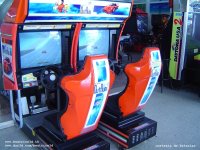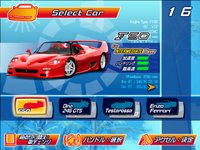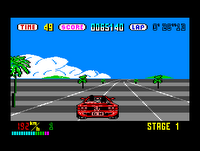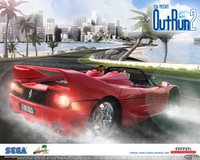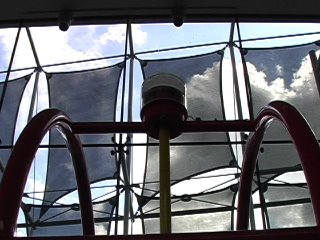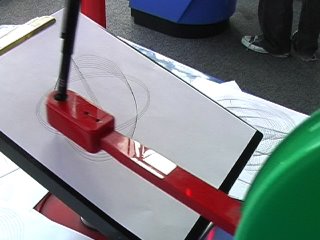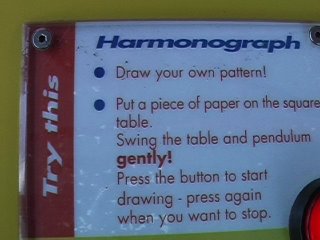Participation / Second Life

Its 23.55pm, Sunday
Last Monday, I the group and Simon started talking about participation and web 2.0 applications. After the discussion I stumbled on something quite unique and sure will interest any one reading this blog enter.
The focus for this theory is Second Life.
Description by wikipedia (http://en.wikipedia.org/wiki/Second_Life)
Second Life (SL) is a privately-owned, partly subscription-based 3-D virtual world, made publicly available in 2003 by San Francisco-based Linden Lab,[2] and founded by former RealNetworks CTO Philip Rosedale. The Second Life "world" resides in a large array of servers that are owned and maintained by Linden Lab, known collectively as "the grid". The Second Life client program provides its users (referred to as Residents) with tools to view and modify the SL world and participate in its virtual economy. Which concurrently has begun to operate as a "real" market. At precisely 8:05:45 AM PDT, October 18th 2006, the population of Second Life hit 1 million Residents.
Audiences make participation that fuel web 2.0 applications. (youtube, myspace e.t.c) Second Life can be classed as a web 2.0 application. Second Life is increasingly growing and gaining interest world wide (http://secondlife.com/). Second life is 100% driven by participation within its 3D virtual environment. From over viewing the web description I’m to believe second life is being geared towards an economy of some kind. Ok, the really interesting piece of text I read.
“Since opening to the public in 2003, it has grown explosively and today is inhabited by a total of 1,179,846 people from around the globe.”
The above text gives me the reason to believe second life will grow to be distributed over various other platforms in the near future, resulting in a wider consumer audience.
I’m going to re-draw the diagram I created while sitting in the studio last Monday:
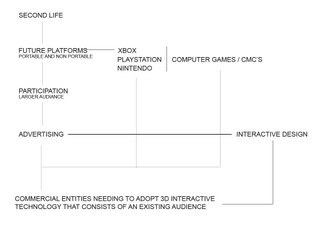
Explanation of diagram
First, we are looking at second life as a platform for distributing content. The platform expands using existing technologies such as game consoles mobile and non mobile devices. Game consoles are usually used for computer games opening a direct audience of potential consumers. This is where advertising comes in, as the game industry is at large and holds a strong future.
Being the medium of second life it’s a perfect platform to deploy advertisements to this specific audience. This could start a new form of broadcasting advertisement media. Under a new platform opening new possibilities that wouldn’t be possible under the real world, or even within existing standard static web page.
Interactive design would be the obvious choice of profession, to help design and develop the content that would be delivered via this new broadcasting platform. Second Life would allow commercial entities needing to adopt 3d interactive technology that consists of an existing audience or specific audience.
So what’s my theory?
Second Life or a similar interactive platform will grow to allow engaging advertisement media to be deployed via the internet. This new form of medium will not be housed with the constraints of the real world environment, resulting in a new way of directing the content to the targeted consumer’s.
Related links: http://jiad.org/vol6/no1/nicovich/
http://idmashup.org/conference-news/virtual-participation-on-second-life


